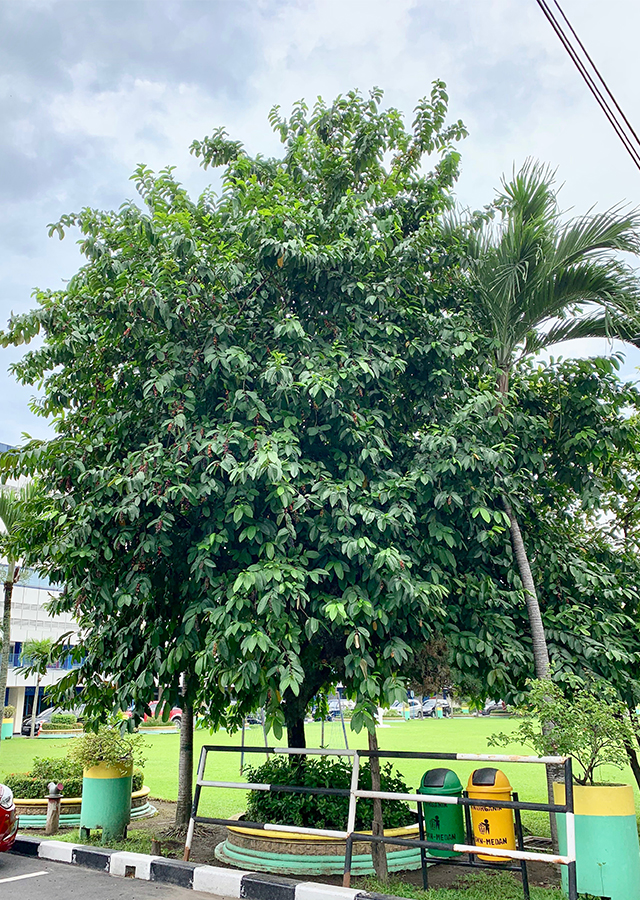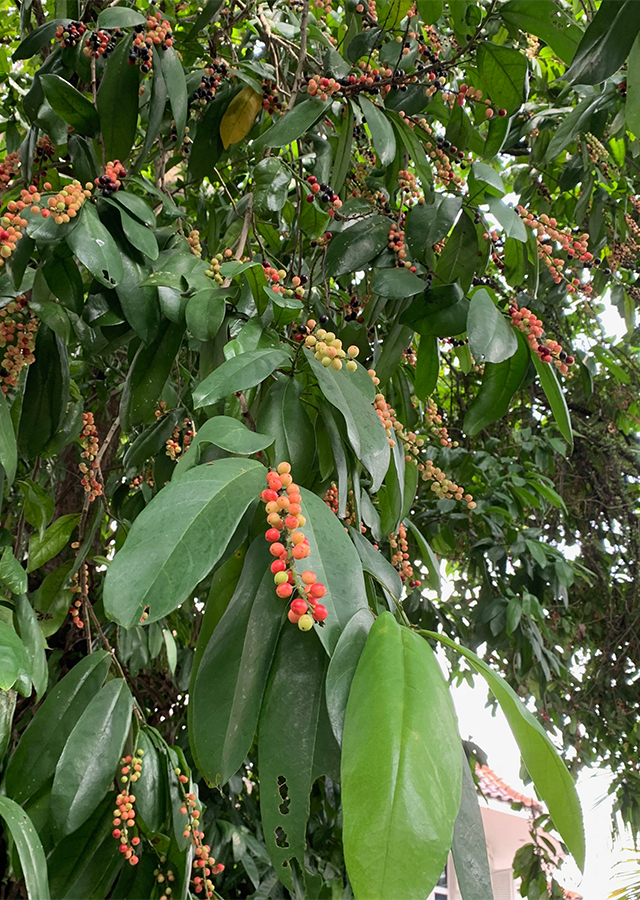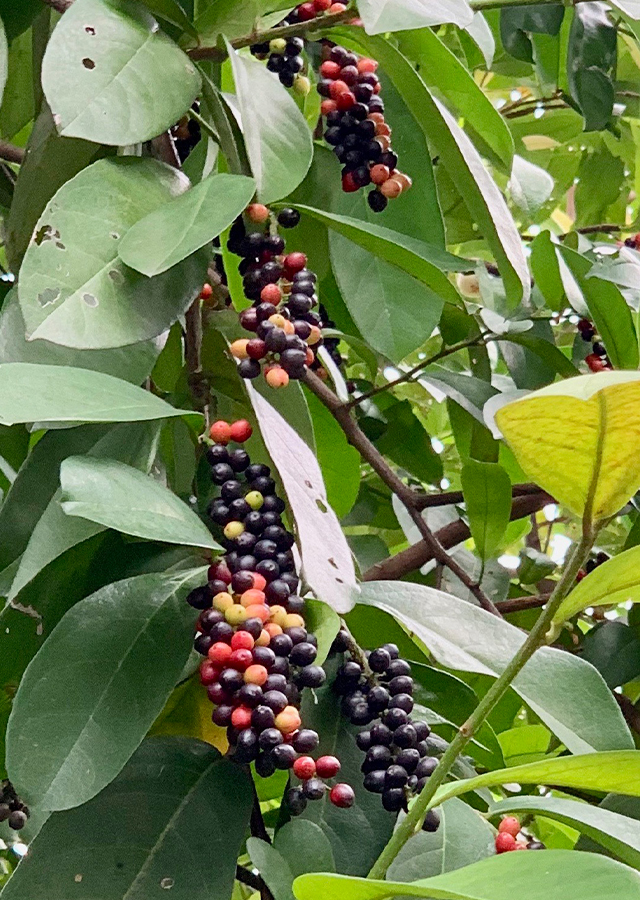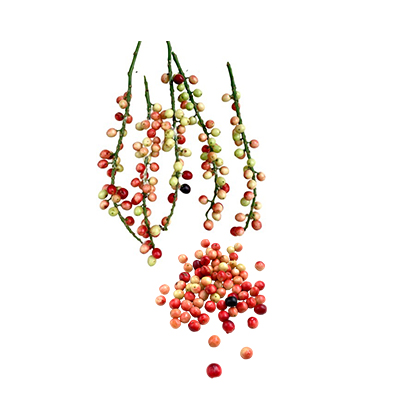Currant Tree
Antidesma bunius (L.) Spreng.
Phyllanthaceae
Location in our garden
Orchard



Synonym
Sapium crassifolium Elmer
Antidesma andamanicum Hook.f.
Antidesma bunius var. pubescens Petra Hoffm.
Habitus
Trees. An evergreen-perennial tree, grows up to 15–30 m high
Part Used
Leaves
Bark
Fruit
Roots
Stem
Growing Requirements
Full Sunshine
Need Shade
Habitat
Riverbanks
Forest
Roadside
Overview
Currant tree is common in the wild from the lower Himalayas in India, Sri Lanka, and South-East Asia (but not Malaya) to the Philippines, PNG, Solomon Islands and Northern Australia, but seems to be absent in Peninsular Malaysia (except Singapore) and nearly absent in Borneo. This plant is cultivated in India, Sri Lanka, Southern China, Myanmar, Laos, Vietnam, Thailand, Singapore, Philippines, Indonesia, New Guinea, Christmas Islands, Tahiti, Hawaiian Islands, Cuba, Honduras and Florida.
Vernacular Names
Ba mao ruesi (Thai), Buni (Malay), Buni no ki (Japanese), Antidesme (French), Moi-kin (Australia), Bignay (Tagalog-Philippines), Bignai (Spanish).
Agroecology
Currant tree thrives from sea-level up to 2,100 m altitude. In its natural area, it occurs in a wide range of habitats that include: wet evergreen forest, dipterocarp forest, teak forest, on river banks, at forest edges, along roadsides, in bamboo thickets, in semi-cultivated and cultivated areas, in shady or open habitats usually in secondary but also in primary vegetation. It thrives best in full sun and on a wide range of soils from sand, loam or clay and on (coral) limestone or granite bedrock. This plant is tolerant of infertile soil and occasional waterlogging.
Morphology
- Trunks - straight, bole diameter of 20–85 cm, yellow brown bark.
- Leaves - distichous with petiole furrowed and short, glabrous to ferrugineous-pubescent.
- Flowers - pistillate 2.5–3 by 1.5 mm; pedicels 0.5–2 mm long, pubescent to glabrous; calyx 1–1.5 by 1.5 mm, cupular, sepals 3, green, glabrous to pilose on both sides, style terminal to subterminal with 3–6 stigmas.
- Fruits - globose or ovoid, glabrous, 5–11 mm by 4–7 mm, green turning yellow to pink to red and bluish-violet when ripe juicy with a single, straw-coloured, compressed, oval, 6–8 mm by 4.5–5.5 mm, ridged or fluted, very hard kernel.
Cultivation
- Propagation is by seed, stem cutting, grafting, marcotting. Marcots of 2-5 cm diameter normally produce roots in 95 days.
- A 6-8 m spacing in the field is recommended.
Chemical Constituents
Phenolic (kaempferol, quersetin, mirisetin, antocyanin), poliphenol (catechin, epicatechin, rutin dan tran-resveratrol), phenolic acid (gallic, caffeic, ellagic acids).
Traditional Medicinal Uses
- The leaves and roots are used for traumatic injury.
- The leaves are used to treat coughs, indigestion and gonorrhea
- Used for syphilitic affections.
- Studies have shown cytotoxic, antioxidant, antidiabetic, hypolipidemic properties.
- The leaves are sudorific and employed in treating snakebite in Asia.
- Decoction of dried materials is used for parched tongue, lack of appetite, indigestion, and sprains.
- Juice of fruits is used for heart disease and high blood pressure.
- In Vietnam, stem-bark is used for fevers.
- In India, solution from boiled leaves is used for bathing patients with painful joints.
Part Used
Reference Sources
- Lim, T.K. (2012). Edible Medicinal And Non-Medicinal Plants: Volume 4, Fruits. pg220.
- Fern, ken. (2019). Useful Tropical Plants.Antidesma bunius. http://tropical.theferns.info/viewtropical.php?id=Antidesma+bunius 30-01-2021.
- StuartXchange. (2020). Philippine Medicinal Plants. Bignay. http://www.stuartxchange.com/Bignay 30-01-2021.
- Md Shariful Islam. (2018). A review on phytochemical and pharmacological potentials of Antidesma bunius.Journal of Analytical & Pharmaceutical Research. https://medcraveonline.com/JAPLR/a-review-on-phytochemical-and-pharmacological-potentials-of-antidesma-bunius.html. 30-01-2021.



